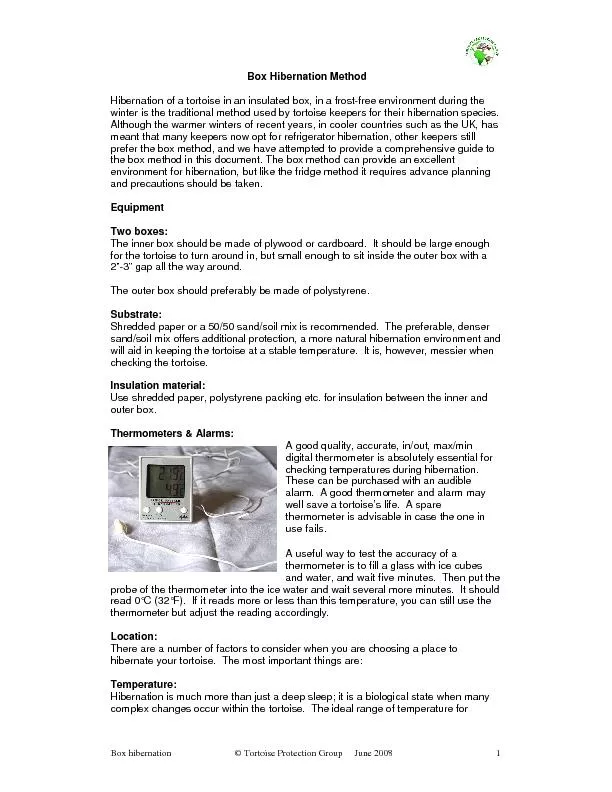PDF-PHYSIOLOGY OF HIBERNATION IN BEARS ERIC C HELLGREN1 Caesar Kleberg W
Author : anderson | Published Date : 2022-10-26
468 Ursus 101998 arousal state The QT segment or relaxation interval of electrocardiograms of bears is short and thus more like hibernating than nonhibernating species
Presentation Embed Code
Download Presentation
Download Presentation The PPT/PDF document "PHYSIOLOGY OF HIBERNATION IN BEARS ERIC ..." is the property of its rightful owner. Permission is granted to download and print the materials on this website for personal, non-commercial use only, and to display it on your personal computer provided you do not modify the materials and that you retain all copyright notices contained in the materials. By downloading content from our website, you accept the terms of this agreement.
PHYSIOLOGY OF HIBERNATION IN BEARS ERIC C HELLGREN1 Caesar Kleberg W: Transcript
Download Rules Of Document
"PHYSIOLOGY OF HIBERNATION IN BEARS ERIC C HELLGREN1 Caesar Kleberg W"The content belongs to its owner. You may download and print it for personal use, without modification, and keep all copyright notices. By downloading, you agree to these terms.
Related Documents














